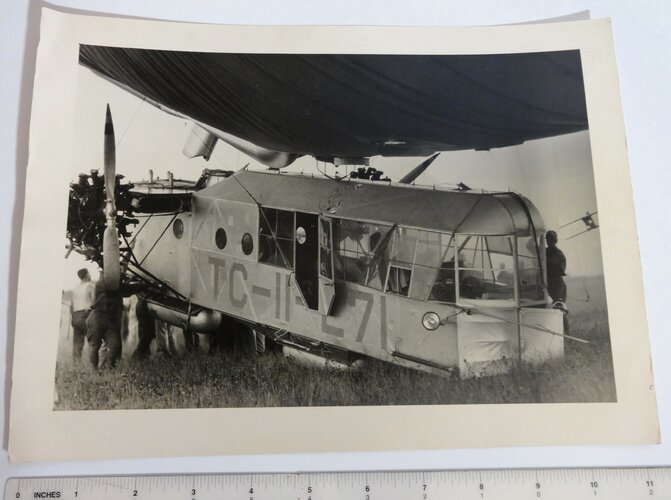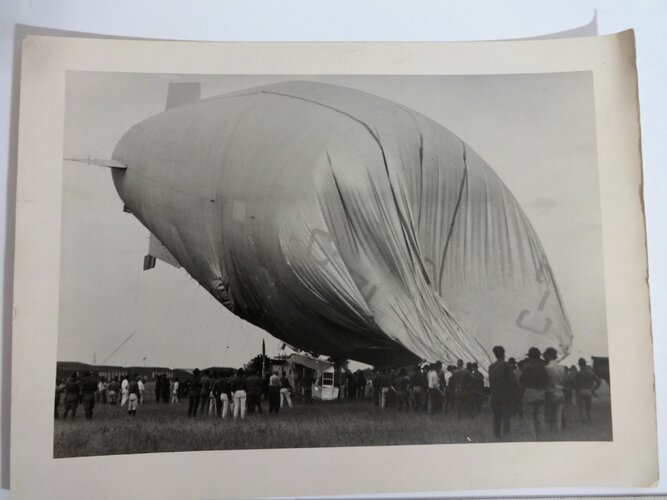I am posting this here rather than in alternate history because I wanted to pose a question without a lot of political baggage.
If Helium had been more widely available would we have seen a Zeppelin based transatlantic and later leisure travel industry.
Rather like the great Cunard liners, the silver zeps flying over Manhatten are a byword for luxury.
With the retirement of 747s and whalelike cruise liners becalmed in corona filled waters what better time than to dream of elegant zeps crisscrossing the globe.
It was looked at after the war and you can find the Goodyear ads on it but the proliferation of airfield and post-war aircraft on top of the failure of the expected post-war air travel demand pretty much sealed the deal.
I am posting this here rather than in alternate history because I wanted to pose a question without a lot of political baggage.
If Helium had been more widely available would we have seen a Zeppelin based transatlantic and later leisure travel industry.
Unlikely. The US had helium in abundance and couldn't make a go of it. Zeppelins are big, slow and vulnerable to the weather. Planes might have been more expensive, but crossing the Atlantic in hours rather than days makes extra cost worth it.
Actually the US did NOT have an 'abundance' of helium, which was actually probably THE most serious problem for the US program. We didn't have enough extraction or storage for the rigid airships let alone the actual 'planned' ones pre-war. They had to retire the Los Angles in order to free up enough helium to float the Akron and only by getting a special Congressional funding bill were they able to expand the extraction and storage to cover getting Macon in the air on time. And it was still a problem getting enough for the Blimp squadrons during the war, so much so they needed another special expansion funding bill.
Truth was while Congress was convinced by the Bureau of Standards, (they had the US helium production over-sight but oddly enough many of the senior members had heavy investments in the helium fields but I'm sure that had nothing to do with the whole hydrogen vs helium thing) after the Army's "Roma" crash to mandate only helium be used in US Airships there was almost no facilities to extract or store helium. Stop me if you've heard this before but Congress had to pass a special funding act to actually build the extraction and storage systems and even then only a small fraction of the gas was being produced.
Big? Yes. Slow, sure. Vulnerable to weather? Heck yes but it's not like that wasn't well known and understood. The problems with the US program were financial when you get right down to it and arguably those ended up boiling down to political as a contributing factor.
Los Angeles worked right up until they retired her.
Shenandoah had to have relief valves removed because she was venting to much expansive helium in flight. She was ordered to fly in a season and area known for storms and rapidly deteriorating weather because the Navy program needed more money to buy more helium for the upcoming generation.
Akron damaged her tail fin because she had to fly through a canyon rather than over it because going over would mean venting too much expensive helium. She didn't damage it ENOUGH to really point out the fatal flaw in the tail fin design so when she got caught in a storm and her tail hit the water in a similar fashion the tail broke off this time.
Macon was similar and for similar reasons. Add to that there were only a few places that either could land and be sheltered even though many more had been planned and initially budgeted for. Those got canceled because setting them up AND buying helium to store for them was too expensive.
The Army had an extensive LTA program planned as well but once the decision to go with helium only was made the Navy was the only agency able to afford to buy what helium there was. (The Goodyear commercials literally had their own supply because it wasn't possible for 'civilians' to buy government helium) After WWII the US finally had a workable system for extraction and storage but the need was going away rapidly. The blimps were too slow for the ASW role and the advent of nuclear subs meant that the majority of the 'tells' they used were going away but they worked for a while as Airborne Early Warning Radar. (Arguably that role was viable into the 90s and through today but again there's a financial aspect that was incompatible)
Post-War you're correct that aircraft were probably to far ahead already to allow a come-back. Pretty much the same today but there's still the interest and arguable utility. (Going back to my favorite "modern/near-future" war story I still get a kick out of the idea of stratospheric laser-armed "BattleStats" as part of a missile defense system

) But in context we'll never really know, especially in the US because we self-handicapped our research and development into a corner and never fully really defined our experience or technology.
It's rather ironic that we figured out that the main cause of the "Roma" disaster was in fact we'd installed engines too powerful for the design into it. The then recently organized NACA in fact was in the process of trying to get their wind tunnel data to the Army the day the accident happened but alas Congress was convinced that it was all the hydrogen's fault and so we got our entire LTA research program crippled.
I was thinking in terms of the 30s rather than the 50s. The Zeps replicated the style and luxury of the transatlantic liners.
With no Lakhenhurst tragedy, helium filled airships would have offered comfort not matched until the 707 era.
Until 1939 the rich were doing rather well and transatlantic travel was booming.
Yes, no, and sort-of

(Did you mean 1929 instead of 1939 because while Tran-Atlantic travel was coming back up by 39, the actual flow was mostly AWAY from Europe by those that could afford it)
The Hindenburg was arguably the last straw for the giants but there was still a plan in place to build another one or two Navy airships, and at least one Army airship capable of servicing medium bombers in-air. But that writing vis-a-vis the rather obvious coming war-clouds wasn't going to allow enough room in anyone's budget for that. Further, you still had the helium issue to deal with and even though Goodyear suggested an idea to use the retiring Los Angeles as a passenger carrier test-bed both the fact the Navy wasn't going to foot the helium bill and the fact that it wasn't really possible for them to get that much government helium in the first place sunk that idea quickly. (Not to mention the lack of those proposed military Airship bases stung out across the country that Goodyear was planning on 'dual' using made the idea even more of a non-starter)
Really by the '30s it's too late because the US especially but even the UK and France are so far behind the airship curve there's really no plausible way to catch up. I'd argue you have to avoid the "Roma" accident and the subsequent mandate for the US to use helium only. Having the R38/ZR2 not happen would be a good POD as well and add in dodging the R101 disaster, (which is arguably possible since you'd just need to have her NOT miss a couple of earlier "near-miss" accidents that would have grounded her) and have the R100 used instead. (That's a bit of a political bombshell but that's what makes such alternatives fun, no?

)
Essentially build up more between-the-wars experience and infrastructure and you add a lot of incentive to consider post-war use even though it will be an uphill battle.
Randy


